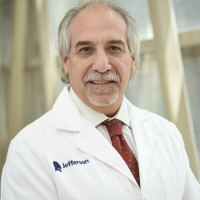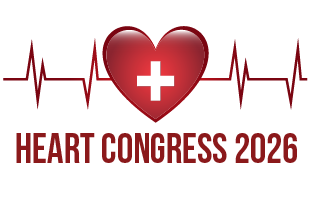3rd Global Summit on
Heart and Cardiovascular Care
November 26-27, 2026 | Dubai, UAE

Heart Congress 2026

Thomas Jefferson University, USA
Abstract:
End-Stage Renal Disease (ESRD) is more prevalent in
socioeconomically impaired areas compared to their affluent counterparts. This is a multi-factorial problem owing to
poorly controlled hypertension, diabetes, access to healthcare disparities, education,
and so forth. Nonetheless, ESRD is an
independent risk factor in outcomes for traditional coronary artery bypass
grafting (TRAD-CAB) utilizing aortic cross-clamping and cardioplegic
arrest. Beating-Heart techniques--
Off-pump CABG (OP-CAB) and Pump-Assist Direct CABG (PAD-CAB)-- have been shown
to improve outcomes in certain high-risk CABG patients, such as those with low
ejection fraction. In order to determine if these Beating-Heart
techniques offer similar benefits in patients with ESRD, a retrospective review
was performed at a single socio-economically challenged urban institution. METHODS: Between March 2017 - October 2023, all ESRD patients
underwent CABG using either OP-CAB or PAD-CAB. The STS Risk Assessment
calculator was used to predict the mortality and morbidity. The STS predicted risk was compared to the
actual outcomes.
RESULTS: There were 55 patients: 52 PAD-CAB and 3
OP-CAB. There were 37 men and 18 women
with a mean age of 61.5 years (41 – 77 years).
The timing of surgery was the following: 16 Elective, 35 Urgent, and 4
Emergent. Case presentation included: 24
NSTEMI, 4 STEMI, 6 Unstable Angina, 7 CHF, 1 Cardiac Arrest, and 13 with a
positive exercise stress test (EST) for renal transplant screening. The mean EF
was 47% (range: 15 – 75%). The mean
number of grafts was 2.4 (1 – 4) and CPB time was 78 minutes (0- 128 minutes
CONCLUSIONS: The national
profile of the STS database patients undergoing CABG are significantly
different than the study center patiets.
The beating-heart techniques (OP-CAB and PAD-CAB) appears to demonstrate
superior outcomes compared to the STS predicted risk for ESRD patients
undergoing CABG. This technique may
offer advances over the traditional CABG, particularly in those patients from socioeconomically
challenged urban centers.
Biography:
Dr. Samuels received his Undergraduate degree in Biology and Anthropology
from the University or Rochester, NY. In
1983 received his Medical Degree from Hahnemann University in Phildelphia, PA.
Dr. Samuels completed his General Surgery and Cardiothoracic Surgery
Residencies at Hahnemann Hospital in 1995 and joined their faculty in the
Department of Cardiothoracic Surgery. Dr. Samuels was appointed Director of
Cardiac Transplantation and Mechanical Circulatory Support in 1999 and went on
to perform the world’s fifth totally implantable artificial heart in 2001. Dr. Samuels became Professor of Surgery at
Thomas Jefferson University in 2012 and serves as the Chief of Cardiac Surgery
at Jefferson-Einstein Medical Center in Philadelphia. He continues to contribute clinically and
investigatively in ventricular assist device (VAD) technologies as well as
beating heart coronary artery bypass grafting (CABG).
